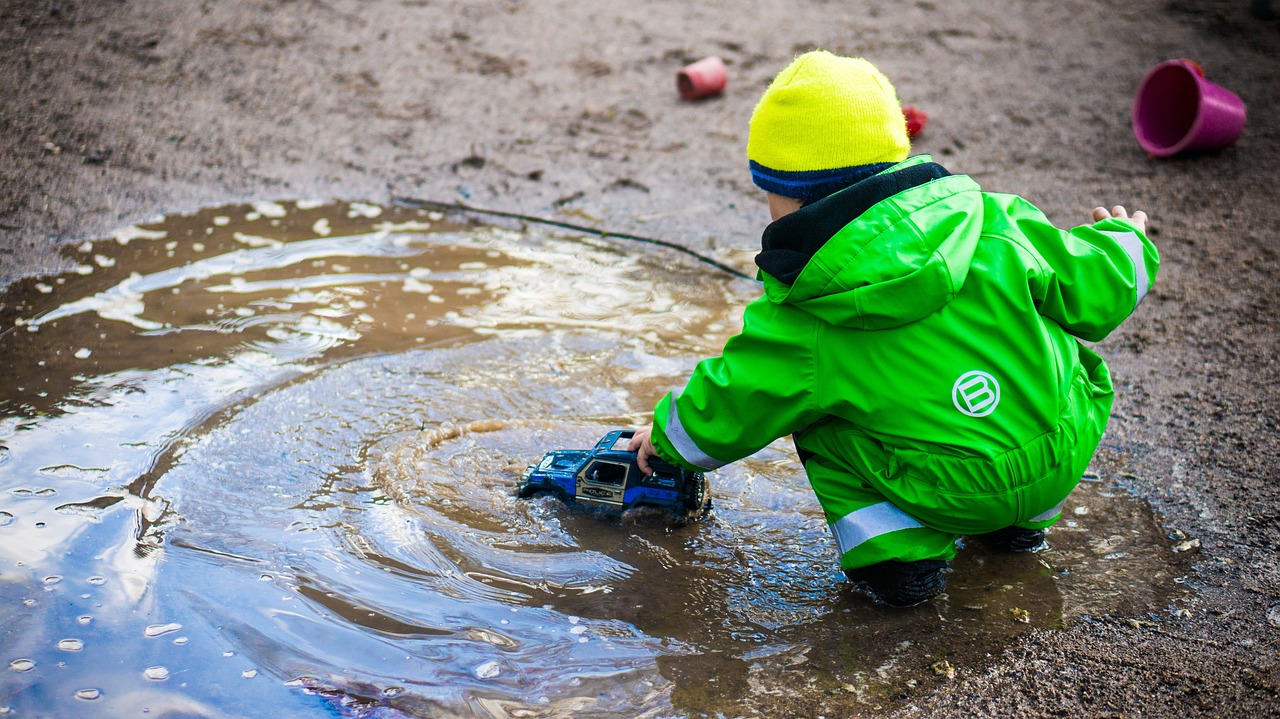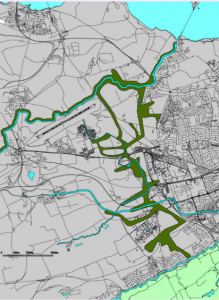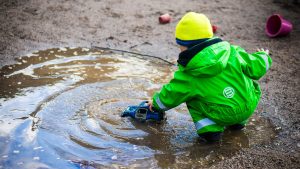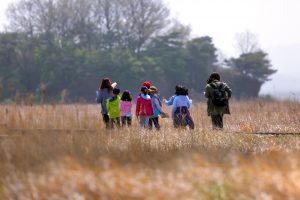In the previous blog, we focussed on the topic of inclusivity, in particular how the West Edinburgh Park would strive to be as inclusive as possible, serving everyone no matter income, ability, or age. Taking this into consideration this blog will focus on the educational benefits of the West Edinburgh Park, and how having a rich and biodiverse natural setting can help children learn and develop more efficiently.
What is outdoor education?
In proposing the West Edinburgh Park we want to make it evident that this park not only serves as a place for recreation, but can also be used as a location for learning and education. To put it simply, outdoor education is all about taking things that would normally be taught in the classroom, outside. Changing the learning environment opens up possibilities for creativity, learning, and socialising. Outdoor education is recognised for its various benefits by the Scottish Government, and was officially introduced into the national curriculum in 2010. Although at first glance, it may seem that learning outdoors limits itself to subjects like geography, biology, and physical education, a whole range of subjects can actually be taught outdoors including numeracy, literacy, social studies, and the arts.
Unlike learning in the classroom, outdoor education is often unstructured, and child led, meaning the children use their own initiative and imagination to discover new things. This access to the outdoors is vital, especially in this technological age.
“If children don’t grow up knowing about nature and appreciating it, they will not understand it. And if they don’t understand it, they won’t protect it. And if they don’t protect it, who will?”[1] – Sir David Attenborough
Children of the current generation are the first to have never experienced life without instant access to the internet and social media. It’s true that both of these can be excellent tools for learning, however it seems as though new technology is eating up time that was once spent outdoors. A recent study from the University of Stirling found that children are spending significantly less time outdoors than in previous years, with the average child only spending 7 minutes outdoors a week during class time. Introducing more opportunities for education outdoors, both within and outside of class time could help children to form deep connections to the world around them and strive to protect it throughout their lives.
What are some of the benefits?
Learning outdoors can have various benefits for children and young people, firstly outdoor play is vital for healthy childhood development. Activities such as climbing, running and jumping are all important gross motor skills that can be fine tuned when playing outdoors. Also, having time outside of the classroom encourages children to try new things outside of their comfort zone. This could be exercising, which would help their overall health and wellbeing, or learning about the biodiversity in their surroundings.
As I previously mentioned, outdoor learning often involves unstructured play, this helps children to learn in a natural true-to-life style environment, teaching them decision-making skills whilst heightening their curiosities. Outdoor education has been shown to increase concentration and academic performance, with one study examining children’s poetry writing abilities before and after completing outdoor education programmes. The results showed that children had written more and used more imagery after having been exposed to nature, highlighting how it can improve creativity and help with overall literacy skills.
This freedom to explore the outdoors at every child’s own pace also has shown to increase confidence and engagement inside and outside the classroom. NatureScot’s Learning in Local Greenspace project reported that children from some of the most deprived schools nationwide benefited from experiencing outdoor education, with teachers suggesting that it improved their pupils’ confidence, emotional wellbeing, and connection with nature. The benefits for every individual child are truly endless, with research reporting that learning outdoors improves behaviour, attention span, attendance, and overall academic performance.
A teacher’s perspective
I spoke to Carly, a primary school teacher in Fife, to ask her about how outdoor education benefits her pupils. She told me about the types of outdoor learning activities that she does with her class, including play in the pod. This is a pod built in the school’s playground full of different outdoor equipment, all children (P1 – P7) get to access the pod once a week and are encouraged to play freely, without any intervention from their teacher. Carly described how her pupils (P2) always came up with something new every week, using their creativity to play in different scenarios.
“My class truly brings the topics they are learning inside the classroom into the outdoors. Right now the class topic is farm to fork, and pupils would create their own farms and show me how food grows”
She described how she enjoys getting to take her class outdoors to learn as she finds it changes their mindset, making them more engaged, by allowing them to have brain breaks. She gave an example of how outdoor learning has specifically helped children with developmental delays, as they experience more sensory stimulation than indoors.
Carly explained the importance of using the natural environment when learning outdoors, stating that it is not simply just taking the activity you were doing inside outside, but instead it is using the environment around you to provide the educational experience. One example given was instead of doing a music class indoors, pupils could be challenged to find things in their natural environment that could be used to make music.
“I often do my numeracy classes outdoors as I feel the children are more engaged, instead of writing in their jotters we can learn to count or make graphs with things we find around us.”
Unfortunately, the school where Carly teaches, like many other schools throughout the country, does not have any green space on property, meaning outdoor learning is mostly taking place in a concrete playground. She stated how this made it difficult to plan for outdoor activities as space was limited, for example the school currently runs a cycling programme, but when this is on there is restricted access for other pupils in the playground. She expressed how living or having a school connected to the West Edinburgh Park would allow children to increase the amount they learn outdoors.
“I think it’s a fantastic idea, especially with all the different things that could be included. As I said before my pupils’ topic right now is farm to fork, getting to see things like allotments would show them first hand how food is produced.”
She told me about how living in an area connected to this park, such as Elements Edinburgh would also help children to continue to learn outside of school time. She stated that even if pupils’ schools were not situated here, they would take the skills they have learnt from school and build on them in the new park, making new discoveries along the way.
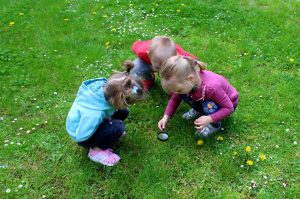
It is evident that taking education and learning outdoors can be extremely beneficial for children, regarding their development, academic achievement and helping to establish their connections with nature. The West Edinburgh Park would allow children to form this important connection, and hopefully also help to build a generation who care about the protection of their environment, inspiring themselves and others to do what they can for our planet.
Blog by Catriona Taylor, Saltire Scholar research intern at Crosswind Developments
[1] Learning through landscapes

